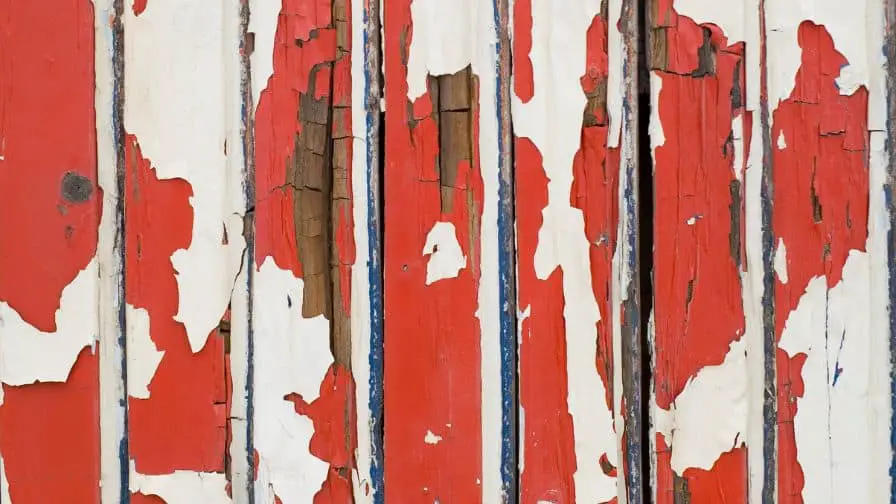
If you are looking for a way to protect your painted surfaces, you may have heard of polycrylic. This product is often used as a protective coating for furniture, floors, and other surfaces. But does it work? Will polycrylic keep paint from chipping? In this blog post, we will explore the answer to that question and provide some tips on how to use this product correctly.
Table of Contents
Will Polycrylic Keep Paint From Chipping?
When applied properly, polycrylic can help keep paint from chipping and extend the life of the paint job. However, it is not a completely foolproof solution. If the paint is not properly prepared before polycrylic is applied, or if the polycrylic is not applied correctly, it can actually cause the paint to chip and peel.
Polycrylic is a clear protective finish that is often used as an alternative to polyurethane. It can be applied to painted surfaces to help protect the paint from chipping and wear.
It can be applied with a brush, roller, or sprayer. It is important to follow the manufacturer’s instructions for application and drying times.
What Is Polycrylic And What Are Its Uses
Polycrylic is a water-based product that can be used as a sealer, primer, or topcoat. It is specifically designed to protect surfaces from moisture and damage while still allowing the underlying finish to show through. Polycrylic can be applied to wood, metal, glass, and plastic, and it dries quickly to a clear, durable finish.
Polycrylic is often used as a topcoat over paint or stain, as it provides added protection against scratches, stains, and moisture. It can also be used to seal porous surfaces such as wood before painting or staining. Polycrylic can be applied with a brush, roller, or sprayer, and it cleans up easily with soap and water.
Subscribe to Interior Works
How Do You Keep Chipping Paint From Chipping?
The best way to keep chipping paint from chipping is to use a primer. By using a primer, you can help to seal the paint and prevent it from chipping. You can also use a top coat of paint to help protect the paint from chipping. If you are still having problems with chipping paint sealing it with a layer of polyacrylic will help.
Can You Polycrylic Over Paint?
Yes, applying a layer of polycrylic over the paint can help to protect the paint from wear and tear, as well as make it easier to clean. However, it is important to make sure that the paint is completely dry before applying the polycrylic, otherwise, it may not adhere properly.
Once the paint is dry, you can apply the polycrylic with a brush or roller, and then allow it to dry completely before adding any additional layers.
Can Polycrylic Be Used Over Acrylic Paint?
You bet! Polycrylic is a great topcoat to use over acrylic paint, especially if you want to protect your paint job from wear and tear. Polycrylic is a synthetic resin that is designed to be durable and long-lasting, so it’s perfect for protecting your painted surfaces.
Polycrylic can be applied with a brush, roller, or sprayer, and it dries quickly to a clear, hard finish. It’s also easy to clean up with soap and water.
When applying Polycrylic, be sure to follow the manufacturer’s instructions for the best results. Generally, you’ll want to apply a thin layer of Polycrylic over the entire surface that you’re painting. Allow the first coat to dry completely before applying a second coat.
Subscribe to Porch Nook
How Does Polycrylic Protect Painted Surfaces
Polycrylic is a synthetic resin that is used as a protective coating for painted surfaces. It is clear and has a glossy finish. Polycrylic can be used on both indoor and outdoor surfaces. It is also resistant to scratches, stains, and water damage. Polycrylic can be applied with a brush, roller, or sprayer. It dries quickly and does not require a primer.
Tips For Using Polycrylic Correctly
Polycrylic is a water-based acrylic sealer, designed to provide a clear, durable finish on the wood. It can be used over bare wood or previously stained and finished surfaces, and cleans up easily with soap and water. Polycrylic dries quickly and can be recoated in as little as 2 hours.
Here are a few tips to help you get the best results when using Polycrylic:
- Start by sanding your surface with fine-grit sandpaper to create a smooth base for the Polycrylic to adhere to.
- Be sure to stir the Polycrylic thoroughly before use, as the ingredients can settle over time.
- Apply the Polycrylic with a clean, lint-free cloth or brush, working in the direction of the grain.
- Allow the first coat of Polycrylic to dry completely before applying a second coat.
- For best results, apply several thin coats of Polycrylic rather than one thick coat.
- Apply polycrylic in well-ventilated areas.
Keep these tips in mind and you’ll be sure to get great results when using Polycrylic!
When Is It Best To Use Polycrylic
Polycrylic can be used indoors or outdoors, and it’s perfect for surfaces that will be exposed to moisture or wear. It’s also ideal for protecting surfaces from scratches, stains, and fading. Polycrylic can be used on a variety of surfaces, including wood, concrete, metal, and more.
If you’re looking for a durable, long-lasting sealer, primer, or topcoat, polycrylic is a great option. It’s easy to apply and clean up, and it can be used on a variety of surfaces.




